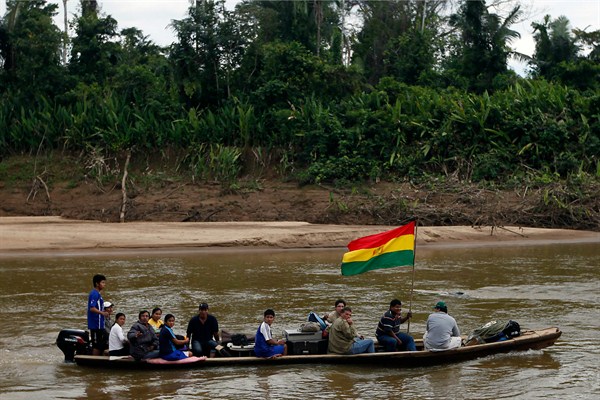La Paz, BOLIVIA—President Evo Morales wants Bolivia to become the “energy heart of Latin America,” producing many times more electricity than it consumes and exporting it all across the continent. The key to these grand ambitions will be hydroelectric power, with several megaprojects planned. But these dams are proving controversial for their social, environmental and economic consequences—and for the way the government is trying to push them through.
There are three main projects at different stages of development. The Rio Madera complex is a set of four dams in the northeast of the country, near the border with Brazil; two of its dams have been built. The Chepete-El Bala complex—located in the Amazon between Madidi National Park, one of the most biodiverse protected areas in the world, and the Pilon Lajas Biosphere Reserve—is currently on hold. The Rositas complex, a set of seven dams, is planned for Santa Cruz, the largest of Bolivia’s nine departments, bordering Brazil and Paraguay. The first and largest of the Rositas dams has its financing secured and construction contracted, pending a potential referendum. Between them, these projects will produce the bulk of the 10 gigawatts of hydroelectric power that the government is targeting.
Bolivia has a history of hydroelectric power projects, taking advantage of the fact that it contains regions both high in the Andes and low in the Amazon, which together provide the key ingredients: water and descent. But these new dams are mostly in flat areas of tropical forests—ecosystems that they would reshape. The Chepete-El Bala complex, for example, would hold water for six months in a space covering some 680 square kilometers, and up to 200 meters deep. Critics say it would be an immense swamp, exuding great amounts of methane, a greenhouse gas. That environmental damage would be exacerbated by the deforestation that comes with the required roads and transmission lines. These dams, it is clear, would not be “green” projects.

